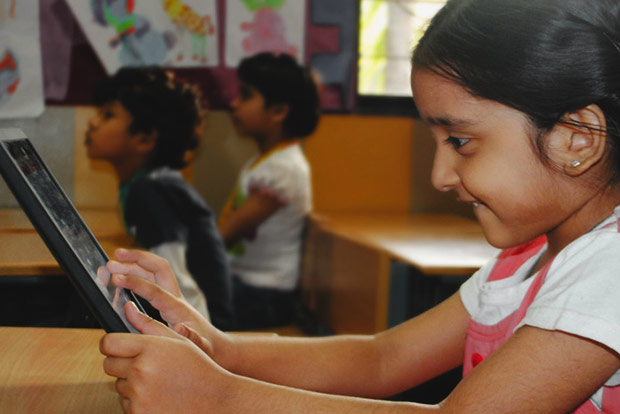Begin typing your search...
Science of Parenting: How to wean your child off gadgets
"I don’t want to live with you guys! You don’t understand me. You are so mean.” This is the statement of a 11-year-old.

Chennai
His mother says, “Whenever it’s time for him to switch off his gadgets, it is a struggle. Today, after coming back from a football game he changed and started playing on the iPad. We reminded him of his time limit and when he did not switch it off, my husband took it from him. That made our son scream, rant and rave.”
This young mother of two shared that her children find it very difficult to limit their time on any gadget. “It’s an ongoing struggle for us,” she said.
Isabelle Filliozat, a psychotherapist, has a theory on the science behind screen time. She says that during our childhood we hated it if the electricity went off just as the goal was about to be scored during a match on TV. Similarly, today, children feel a pain when we forcibly tell them to put off their gadgets when they are playing on them. Dopamine, a neurotransmitter, is released during these screen moments and it is known to relieve stress and pain. When we suddenly shut or snatch away the screen, the child experiences a shock just like we did!
Isabelle suggests that it helps when we wean the child away from the screen. Maybe, by sitting with him and engaging in what he is doing, saying, “Ah, so this is why you get so excited and love this game!” and then slowly helping him to disconnect.
If you could empathise, saying, “You had a really long day and want to play on your iPad for a bit more? I can imagine you feel like relaxing after a tiring day at school.” This would show the child that you cared about what mattered to him. He would feel understood and, in a position, to listen to you.
Scientific research of the brain has proven that when we feel understood and held emotionally, a hormone called Oxytocin is produced. Oxytocin is a good hormone and helps us to stay integrated, not feel judged and therefore, grow in confidence. This self-esteem helps in our ability to solve problems and make good decisions. However, when feelings are denied, the body releases a hormone called Cortisol, which pushes us to flee, fight, or freeze. This hormone is also released when we are having feelings like anger, disappointment and excitement. This is what makes children react strongly and resist disciplining.
So, using this science of the brain, the parent can first connect with the child and then move on to setting the limit firmly yet kindly. “And now, it’s time to put the iPad away. I’m sorry I have to take it away from you as I can see you are finding it hard to put off.”
It has been repeatedly proven that respectful communication, with freedom and choice, is a sure recipe for helping children learn to take responsibility. It allows opportunities for parents and children to solve a problem without being rivals. ‘Should we talk together and come up with a plan to help you to keep your time-limit with the iPad? We can decide on doing a review a week later and see how it goes.’
Interestingly, the mother observed, when his friends are playing outside then he might switch it off and go play with them. This shows us that children care more about the sense of connectedness with peers. If they do prioritise friends over gadgets, are we creating enough opportunities for them build real friendships? Without these opportunities, the gadgets could become their best friends!
— Shalini Modi is trained Montessorian and part of the team at Parenting Matters, an organization which empowers parents to build a deeper connection with families. To know more about our programs and workshops, look us up www.parentingmatters.in
Visit news.dtnext.in to explore our interactive epaper!
Download the DT Next app for more exciting features!
Click here for iOS
Click here for Android
Next Story



